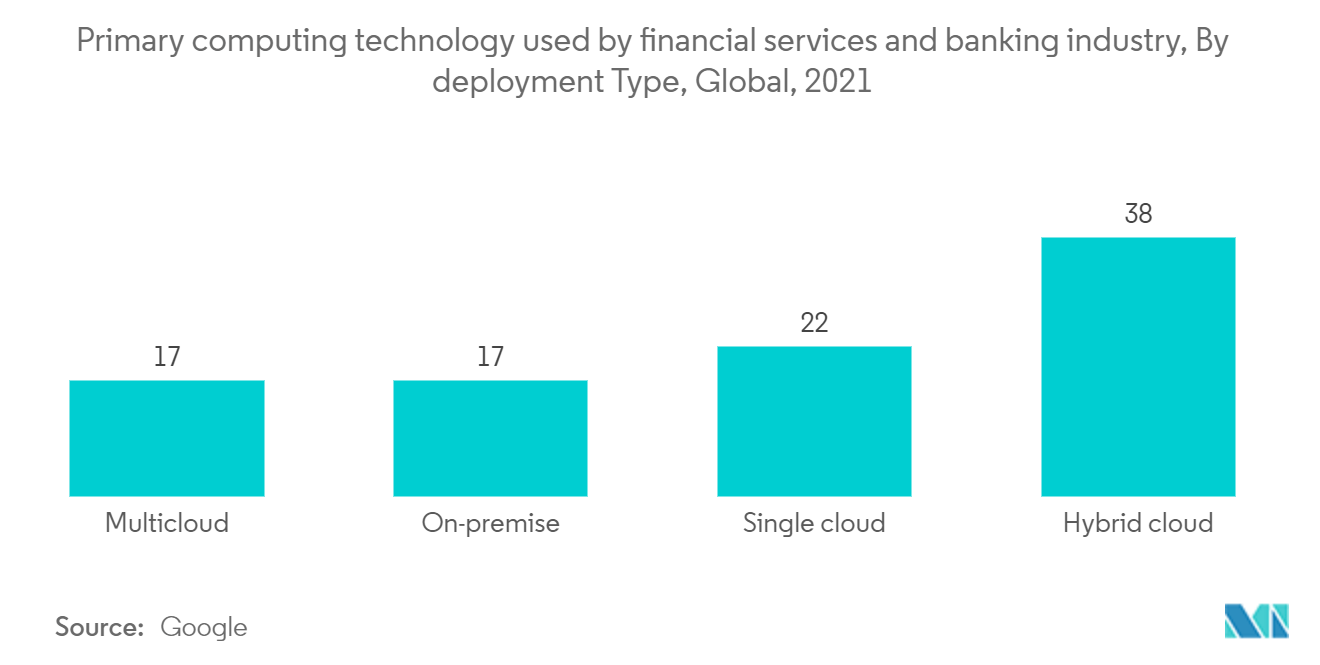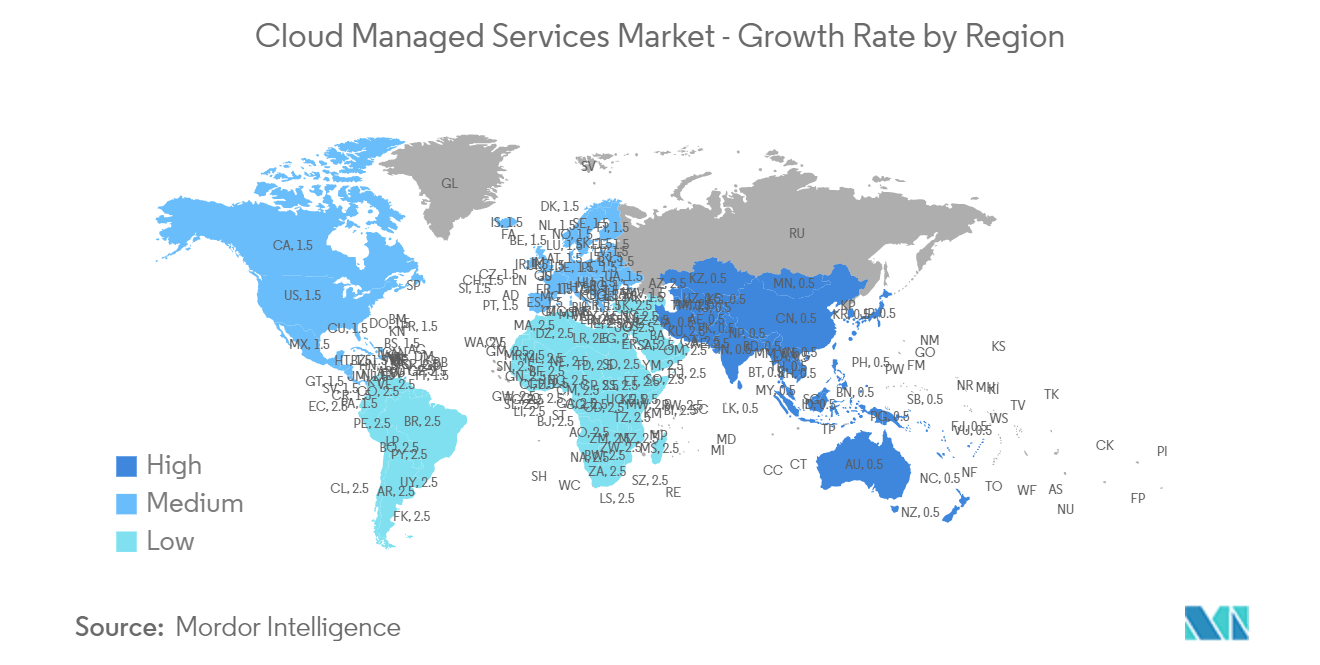Market Trends of Cloud Managed Services Industry
This section covers the major market trends shaping the Cloud Managed Services Market according to our research experts:
BFSI Sector is Expected to Drive Growth in the Market
- The BFSI sector, a pioneer in adopting computer and networking systems to curtail large, space-intensive repositories and databases, is expected to have a substantial share in the cloud-managed services market during the forecast period. The BFSI sector assesses the risks accurately using big data solutions, thus, enabling firms to make informed decisions by analyzing transactional data to determine risks based on market behavior, scoring customers, and potential clients. Banks, such as BNY Mellon, Morgan Stanley, Bank of America, Credit Suisse, and PNC, are already working on strategies around big data in banking, further increasing the growth prospect for cloud-managed services.
- Banks are putting plans in place now to help them prepare for the future as they deal with shifting consumer expectations, evolving technologies, and alternative business models. Leaders in banking and capital markets are beginning to understand that the cloud is more than just a technology. It is where banks and other financial services companies may store their data and applications and access cutting-edge software online.
- The top public cloud providers provide a wide range of cutting-edge products-as-a-service that are accessible on their platforms and assist banks in implementing business and operating models to enhance revenue generation, increase customer insights, control costs, deliver market-relevant products quickly and efficiently, and assist in monetizing enterprise data assets. Additionally, the cloud presents a significant potential to integrate the business and eliminate information and operational silos across risk, finance, regulation, customer service, and other areas. Massive data sets can be combined in one location, at which point the company can use advanced analytics to gain comprehensive insights.
- Financial businesses have been forced to reevaluate their control processes due to the rise of the "work from anywhere" concept. Also, financial institutions have felt a need to control productivity across their workforce in light of altered working conditions. Financial institutions will use the cloud to build a seamless framework for efficiency in the upcoming years. The cloud will be used to examine user online behavior trends. BFSI organizations must rely on the cloud to respond to shifting market conditions and build an office that efficiently connects international teams and clients. Lastly, to facilitate hassle-free cooperation across the enterprise, it will be advantageous to replace time-consuming control processes with easy yet safe processes using the cloud.

North America is Expected to Occupy Substantial Market Share
- North America's strong financial position enables it to invest heavily in advanced solutions and technologies, which provides regional organizations with a competitive edge in the market. Moreover, the region includes the presence of several critical cloud-managed services vendors, such as IBM Corporation (US), CenturyLink Inc. (US), and Cisco Systems Inc. (US), among others.
- The increasing deployment of big data solutions by major IT enterprises, such as Google and Microsoft, to enhance efficiency and streamline their business operations is driving the adoption of the cloud-managed services market in this region. Companies in this region, such as IBM Corp, have invested USD 1 billion in Watson, which focuses on big data and artificial intelligence. It, in turn, is expected to drive the cloud-managed services market growth.
- Effective management remains a primary priority for most firms as cloud adoption spreads across many industrialized nations. American-based businesses have selected several methods for managing their cloud infrastructure to address this problem. Others employ a managed cloud service provider to take on the broader goal with a clear strategy for managing hybrid environments and resources. In contrast, others still manage it themselves or hire a Cloud MSP to assist with the immediate difficulties.
- In June 2022, AWS Managed Services launched Accelerate. Regardless of where customers are in their cloud journey, AWS Managed Services (AMS) Accelerate is a new cloud operations product that aids clients in achieving operational excellence. Accelerate may manage all workloads operating on AWS, and customers have full access to all AWS services. Accelerate uses AWS services like AWS Systems Manager, Amazon CloudWatch, Amazon GuardDuty, and AWS Config for operations and security. These services can be integrated with existing business processes and are more affordable than other commercial solutions. Customers can now become production-ready in a matter of days.
- Cloud-managed services have been widely adopted in North America across various industries, including manufacturing, IT, and healthcare. The North American market led to adoption of cutting-edge technical innovations, such as blending mobile, cloud, and AI technologies into a traditional cloud-managed service. The unusually high internet penetration in North American nations is one of the leading causes. There, it is anticipated that company usage of managed services will increase even further. It is important to remember that service providers who focus on client involvement should expect to benefit more from the recurring revenue model.

